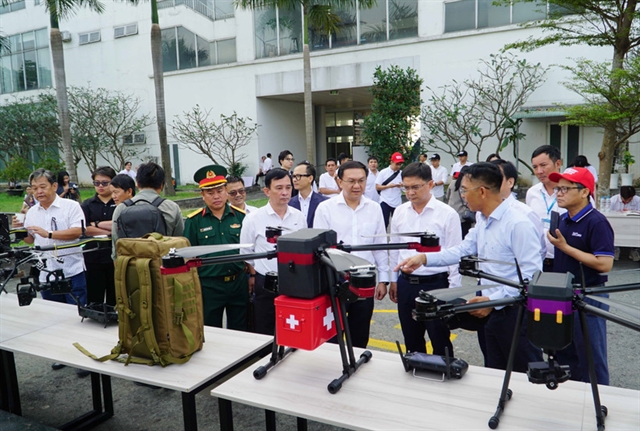 Media-OutReach Newswire
Media-OutReach Newswire

SINGAPORE - MediaOutReach -29 JULY 2020 - As the COVID-19 pandemic continues totransform our daily lives, Microsoft, with research from TechRepublic Premium,looked into the impact the pandemic has had on the region's legacy work styles,business operations and how it has accelerated an increase in overall technologyadoption, realizing a hybrid new normal of work.

|
Through aqualitative research study the whitepaper, titled "TransitioningAsia-Pacific to a New Normal of Work", sees business andthought leaders across industries -- banking, healthcare, education, telecommunications,research, and professional consultancies -- share their insights on how organizational cultures in Asia-Pacific are evolvingto a new paradigm of work.
"As different parts of the world were hit by COVID-19,life and work were changed overnight for everyone," said Kady Dundas, Head of Marketing, Microsoft Teams, Microsoft Corp."All of a sudden we've gone from working in conference rooms to working in livingrooms, and when you do that you have a high dependence on video. We know thatwe have about 200 million meeting participants each day, which equates to 4.1billion minutes of meetings[1]. Those data points showthe tremendous movement to remote work."
Technology: The Enabler
Amid thepandemic, Microsoft found that while organizations have prioritized technologyadoption to enable remote working environments andoverall business transformation, the change was not driven through technologyalone.
"The technology side has been relativelystraightforward," said Dr Joseph Sweeney, IBRS Advisor and Future of WorkExpert. "When COVID-19 came and everyone had to start working from home,Microsoft Teams was an obvious and natural tool to push out. It was alreadythere, and the environment is familiar to anyone using Microsoft Office 365. Itskyrocketed."
A forced mindset change was in play encouraging organizationsto rethink ways of working, how individuals, groups, and managersinteract with one another and the change management needed to adjust to the newnormal of work focusing on the emotional impact of the change.
"Oftenthe reluctance to allow remote work has to do with a quite outdated concept ofhow managers need to manage -- for instance, you need to be able to 'see' peopleto police that they are doing what they are meant to," said Sarah Kaine, Associate Professor,Management Discipline Group and Core Member, CBSI - Centre for Business and Social Innovation, University of Technology, Sydney.
Emerging Trends inthe New Normal of Work
Some ofthe emerging trends that organizations need to be awareof as they plan for the hybrid new normal of work include:
The Future of Workis Now and Hybrid
AtMicrosoft's FY20 Q4 Earnings call[4] which reported a 6 percentrevenue increase in Productivity and Business Processes this fiscal year,Satya Nadella, Chief Executive Officer of Microsoft shared, "The last fivemonths have made it clear that tech intensity is the key to business resilience.Organizations that build their own digital capability will recover fasterand emerge from this crisis stronger."
Undoubtedly, COVID-19 had accelerated the transitionto new ways of working and honed the focus on innovation across the region. Atthe same time, social and cultural environments also have a considerable impacton how organizations approach the new normal of work.
In some cases, organizations are in the process ofaligning themselves to the national government's own response to the changingnature of work. Hidekazu Shoto, InnovativeEnglish and Information and Communications Technology (ICT) Teacher, RitsumeikanPrimary School in Japan shared how the primary school had to find ways torespond to the changing regulatory environment around work that the government hadbeen implementing. "We just started a new working time system, to follow thenew labor laws in Japan. With that in mind, and each teacher's individual circumstancesat home, we had to think about how to match compliance with flexibility," said HidekazuShoto.
Incountries where commutes are longer, organizations will find that more staffwish to work remotely. "The appeal is often due to the convenience ofprofessionals being able to manage their own timing," Andy Khoo, MaybankHead of Customer Experience, based in Singapore, said. "There's lesstransportation and time spent on the road -- particularly in countries likeIndonesia, Thailand and India, where commutes can be long. For other places,like Singapore, it's simply that staff find they're more productive whenworking from home."
Meanwhile,countries with expensive real estate -- such as Australia and Singapore -- willfind financial benefit in transitioning to a model where office space is sharedand cycled among employees that spend part of the time in the office, and othertimes working from home.
The hybrid approach in the future of work reflects howthe lines of work and personal life are blurring. Microsoft's second Work TrendIndex[5] found that beyond thetypical 9am-5pm work day, Microsoft Teams chats outside of the typical workday(from 8-9 a.m. and 6-8 p.m.) have increased more than any other time during theday, between 15% and 23%. Weekend work is spiking as well -- Teams chats on andSaturday and Sunday have increased over 200%.
To cultivate the future workplace, organizations wouldneed to accelerate the process of developing policies enabling individuals tobreak away from the standard 9 to 5 hours, setting reasonable expectationsaround availability and relooking performance indicators.
Great Place to Work Institute, Chief OperatingOfficer, Alicia Tung based in China said, "As far as emotions are concerned, we're not there yet. But it ishappening. In ten years' time, if I were to make a very broad prediction, Iwould say 60-40 in terms of working in the office compared to workingremotely."
Business leaders mustrefresh their focus on policies that enable the upkeep of robust securitystrategies and effective collaboration. Aslockdowns continue to ease across the region, the next step will be a renewedfocus on policy during this hybrid new normal of work.
For more information on how organizations throughoutAsia-Pacific are grappling with -- and succeeding with -- remote work, read thefull paper here.
[2] CBSE-book: 250+ tips for telecommuting and managing remote workers
Microsoft (Nasdaq “MSFT” @microsoft) enables digitaltransformation for the era of an intelligent cloud and an intelligent edge. Itsmission is to empower every person and every organization on the planet toachieve more.
TechRepublicPremium offers the fastest and smartest way to solve the toughest problems inIT today. Our library of premium IT resources includes original marketresearch, time-saving tools, customizable IT policy templates, andcomprehensive eBooks full of the best content from TechRepublic and ZDNet.TechRepublic Premium provides the insights business leaders need to make smartIT decisions. All in one place.




